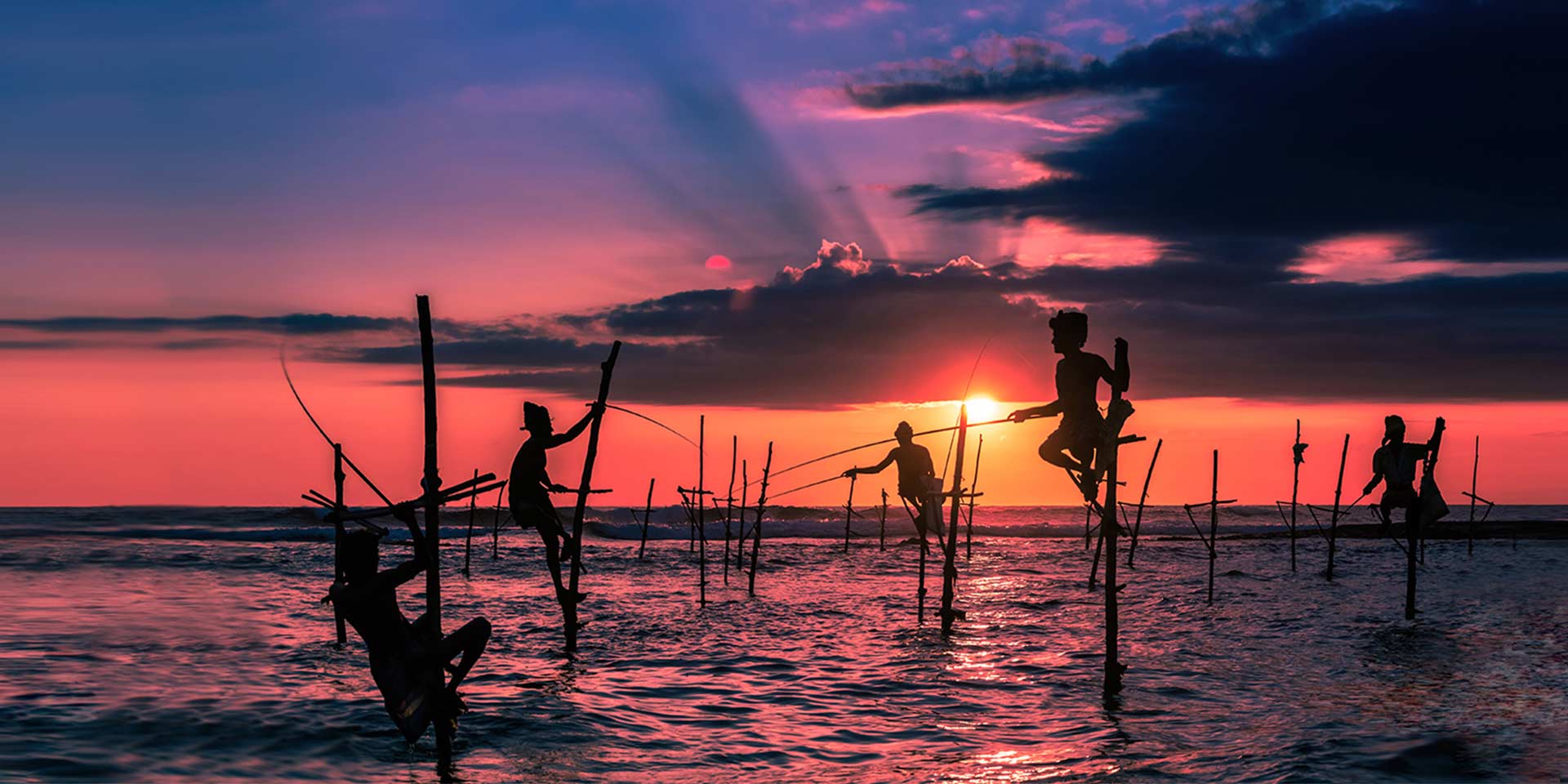Sri Lanka, often referred to as 'magical magnificence,' is a captivating holiday destination, boasting a blend of enchantment and grandeur. Nestled as a tropical island off the southern tip of India, it has been historically labelled the 'pearl of the Indian Ocean.' Its golden beaches, recorded in ancient texts like the Mahavamsa, still showcase the unchanged natural beauty that earned it the name 'Tambapanni' due to the copper-coloured sea-sand observed by early Indian invaders.
Throughout its history, Sri Lanka evolved into a cultural melting pot, influenced by diverse visitors such as settlers from North and South India, mariners from China, traders from Arabia, Rome, Greece, Africa and colonizers from Portugal, Holland and Britain. This amalgamation of cultures shaped the island's identity, reflected in its various names like Lanka, Taprobane, Serendib, Cellao, Zellan, Ceylon and finally, Sri Lanka. The island's multicultural experience encompasses food, dress, languages, religion and customs.
While the island generally enjoys sunny weather, the influence of trade winds from the Bay of Bengal and the Arabian Sea brings the monsoon, contributing occasional thunderstorms to the holiday experience. Sri Lanka offers diverse accommodation options, ranging from luxurious boutique hotels and private villas to budget resorts and guest houses, ensuring something for every traveller. The country's allure lies in its top-notch cuisine, breathtaking scenery, vibrant culture and welcoming people, promising visitors a once-in-a-lifetime holiday.
For those planning a trip, exploring Sri Lanka's attractions and available holiday deals is crucial. Jetwing Travels, recognizing the importance of tailored vacations, aims to make guests happy while embracing the element of 'serendipity'- emphasizing that a 'happy accident' epitomizes the essence of a Sri Lankan journey. In essence, the magnificence of Sri Lanka awaits, promising an unforgettable holiday experience.
TRAVEL INFORMATION
Access to Sri Lanka:
Sri Lanka is directly accessible by all major carriers from their closest hubs. The National Carrier SriLankan operates to all major cities in Europe, Far East and the Middle East. The national carrier also offers easy accesses on its services for travel originating in any point in the United States, Canada, Australasia and South America on code sharing flights via transit points London, Zurich and Paris in Europe, Bangkok, Singapore, Hong Kong and Tokyo. SriLankan Airlines also connects Colombo with all major cities of India as well as with Beijing and Guangdong in China.
The following airlines operate direct scheduled flights to and from Colombo:
https://www.jetwingtravels.com/about-sri-lanka/travel-information/access-to-sri-lanka/
History:
Sri Lanka, Asia's sole country with a historical record dating back to the 5th century BC, boasts ancient cities like Anuradhapura and Polonnaruwa, revealing tales to modern visitors. Sigiriya, a medieval marvel, showcases 1500-year-old frescoes and graffiti, capturing the fascination of past visitors. The island's golden sandy beaches and plains, once controlled by the Portuguese and Dutch, tell the story of flourishing ancient kingdoms. After British rule, Sri Lanka gained independence in 1948. Overcoming a protracted civil conflict in 2009, the country now stands united with diverse ethnicities, embodying a rich tapestry of history and culture.
Awareness to Health & Safety Issues:
Ensure the safety of your valuables by utilizing hotel safety deposit lockers and avoiding leaving them unattended. If driving in Sri Lanka, familiarize yourself with local formalities, road rules, and potential careless drivers. Practice eco-sensitivity in natural areas, stay silent in forest trails, avoid leaving any traces, and seek trained guides for excursions. Refrain from disturbing wildlife. Health-wise, carry sufficient medication, ensure prescriptions include generic names, and rely on bottled water due to uncertain city water quality. In towns, pharmacies and medical practitioners are accessible. Prioritize your well-being during travel.
Shopping Information:
Sri Lanka remains an enticing hub for gem enthusiasts, offering a modern twist to its historic Silk Route allure. The country showcases a diverse array of treasures, from vibrant blue sapphires to intricate handloom textiles. Traditional craftsmen skilfully create silver jewellery and unique metal pieces reminiscent of their ancestors' artistry. Gems like sapphires, cat's eye, and moonstones stand out as enduring investments, while handcrafted textiles, antique porcelain, and Dutch-era furniture charm visitors. The aromatic spice packs make delightful gifts, while the tea, in various blends and innovative containers, echoes Sri Lanka's rich export legacy. Visitors can easily find these treasures in shops or airports during their Sri Lankan travels.
Climate:
Sri Lanka, nestled near the equator, experiences a tropical climate with two distinct seasons. The island, surrounded by the Indian Ocean, enjoys a constant sea breeze that mitigates the high humidity and warm nights during holidays. Temperatures drop in the central hills, offering a pleasant climate for most of the year. The average temperature ranges from 27°C to 30°C, influenced by the Asiatic monsoon, which brings predictable wind reversals. Rainfall primarily occurs during May to July due to the southwest monsoon, affecting the western, central and southern regions, while December and January bring rain to the northern and eastern areas via the northeast monsoon. Sri Lanka's weather exhibits minimal diversity due to these patterns.
Travel Tips:
While the distances are given in kilometres it is best that you plan your travel in terms of time as well. While roads are being fast upgraded, congestion in some main highways and cities can cause delays. The best time for travel is after an early breakfast or after lunch. The public transport system is dependent on Buses and Trains. Generally, these tend to be crowded during peak hours and before and after weekends on long distance routes.

